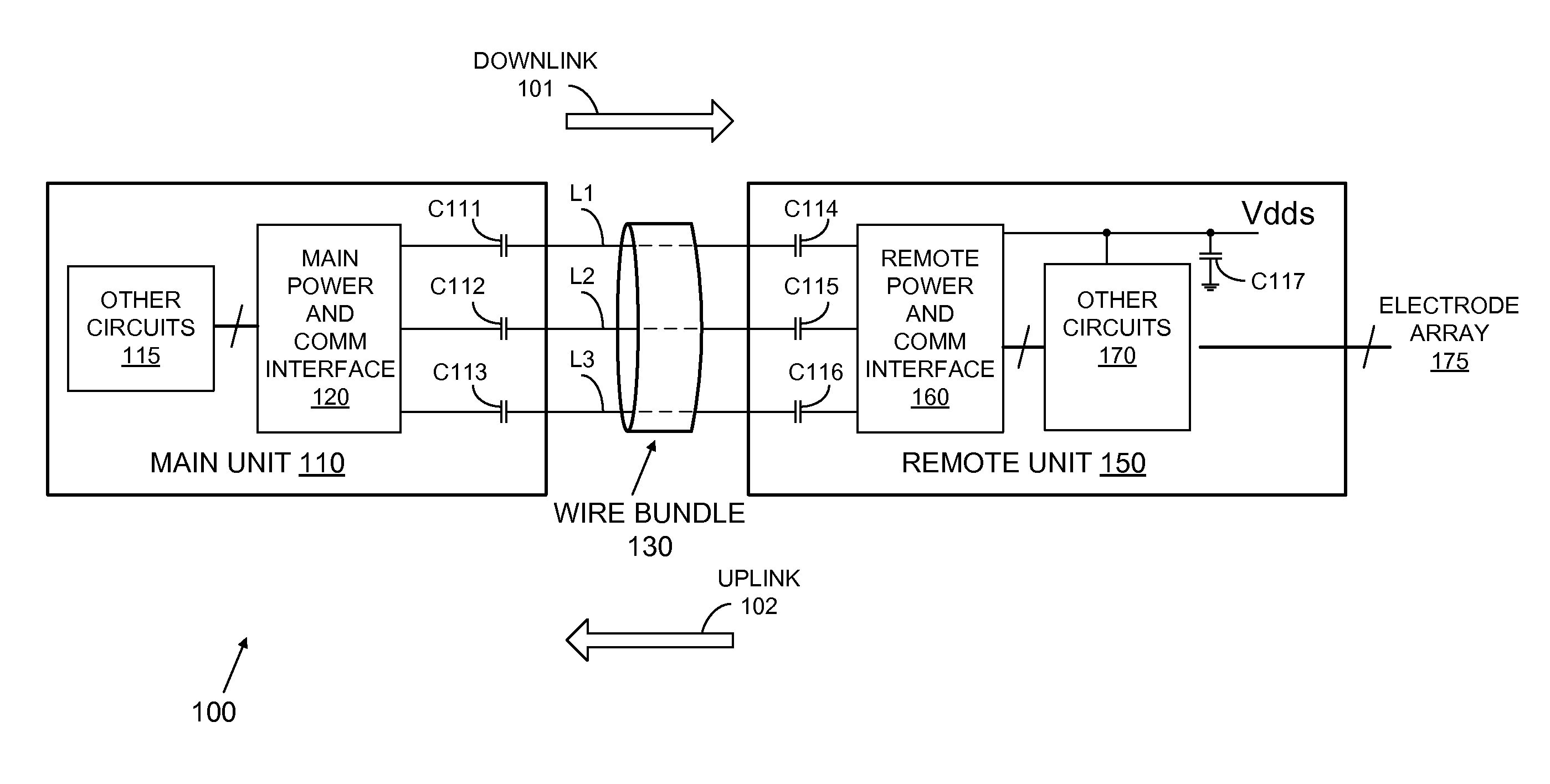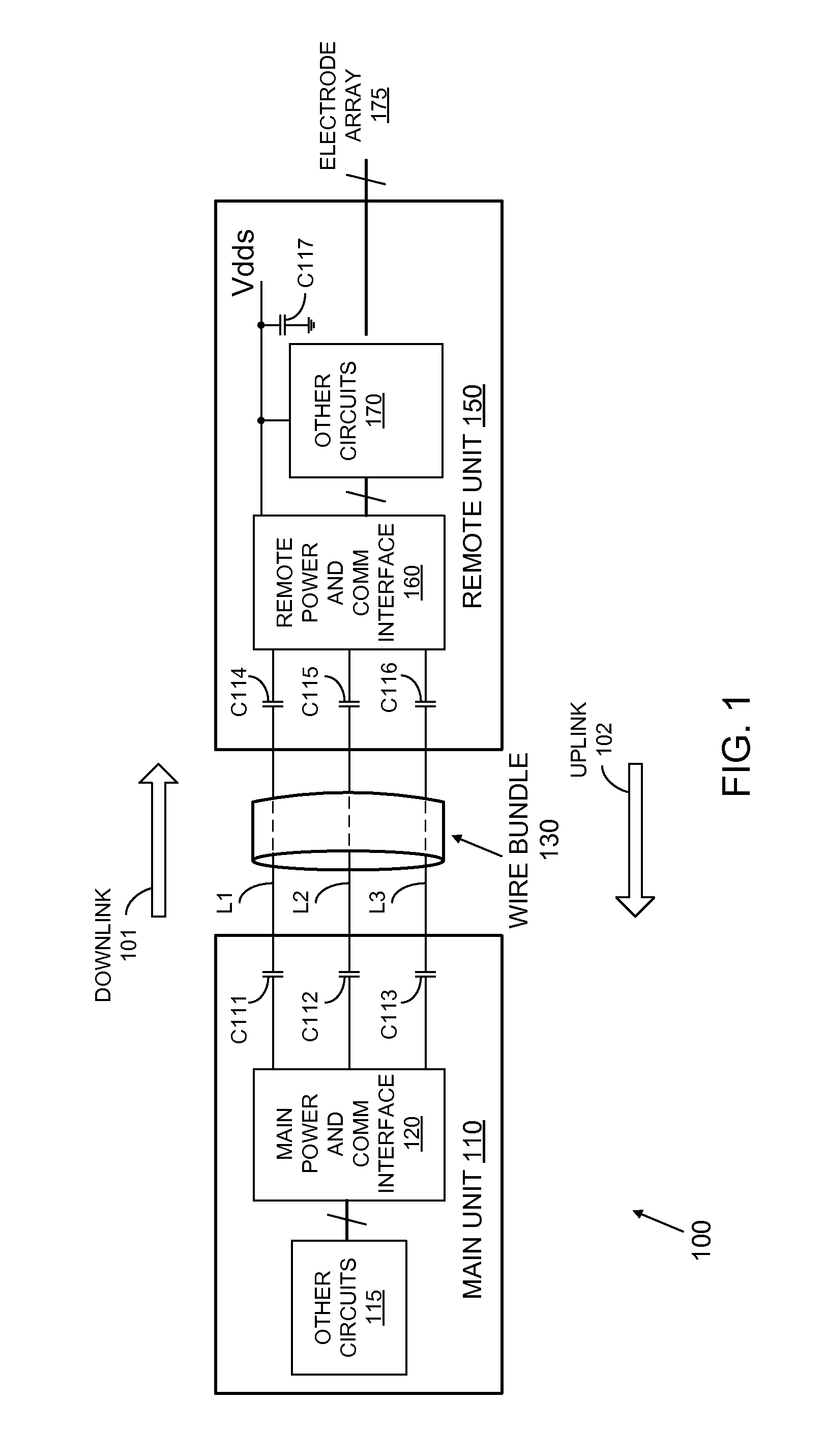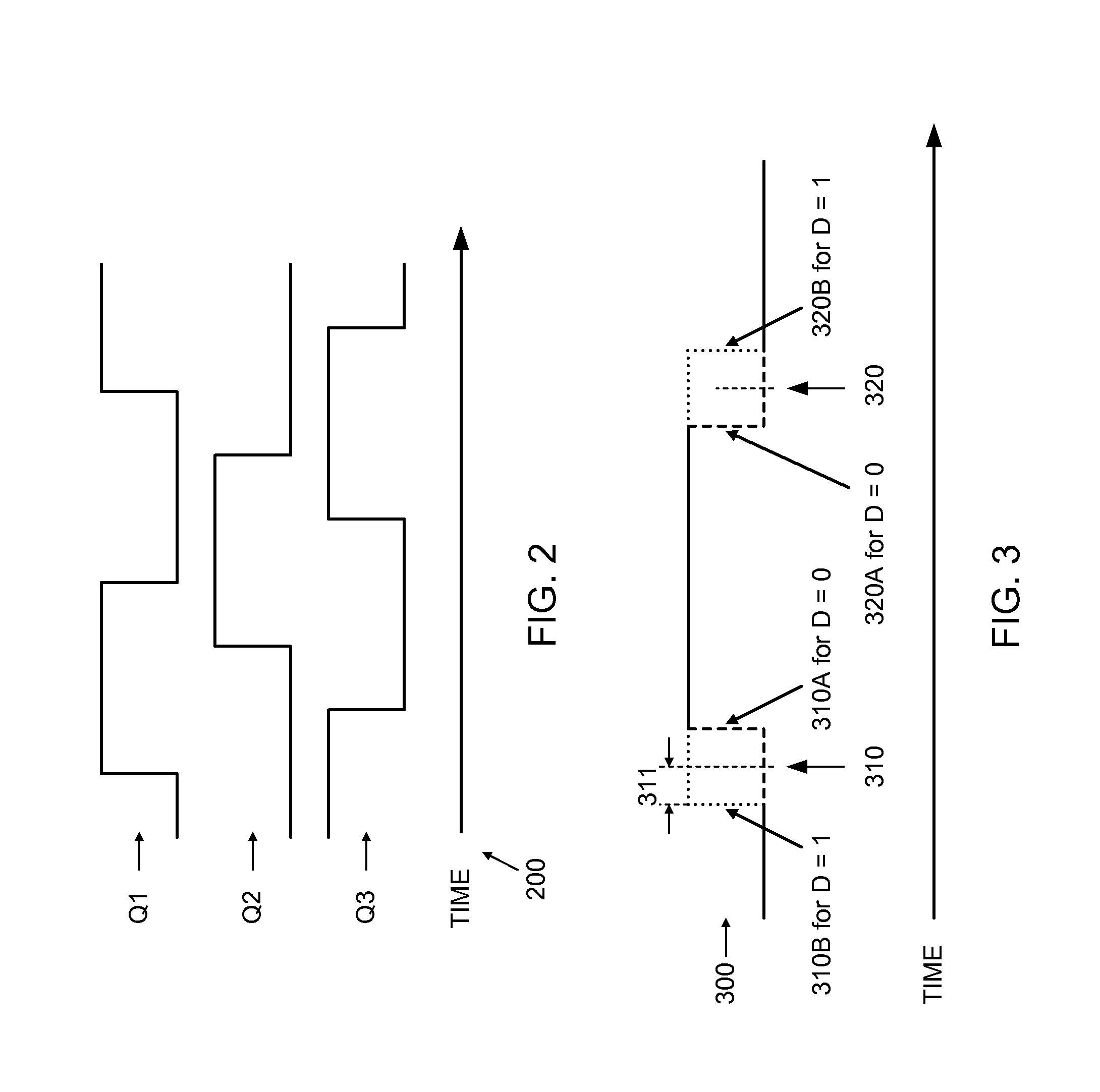Power and bidirectional data transmission
a power and data transmission and data technology, applied in the field of power and data transmission systems and methods, can solve the problems of harmful leakage of electrical current into the body tissue, the mass of the battery and the associated integrated circuit, and the inability of other passive components to allow such a system to be directly attached to body parts,
- Summary
- Abstract
- Description
- Claims
- Application Information
AI Technical Summary
Benefits of technology
Problems solved by technology
Method used
Image
Examples
Embodiment Construction
[0017]Throughout the specification and claims, the following terms take at least the meanings explicitly associated herein, unless the context clearly dictates otherwise. The meanings identified below are not intended to limit the terms, but merely provide illustrative examples for use of the terms. The meaning of “a,”“an,” and “the” can include reference to both the singular and the plural. The meaning of “in” can include “in” and “on.” The term “connected” means a direct electrical, electro-magnetic, mechanical, logical, or other connection between the items connected, without any electrical, mechanical, logical or other intermediary there between. The term “coupled” means a direct connection between items, an indirect connection through one or more intermediaries, or communication between items in a manner that may not constitute a physical connection. The term “circuit” can mean a single component or a plurality of components, active and / or passive, discrete or integrated, that ...
PUM
 Login to View More
Login to View More Abstract
Description
Claims
Application Information
 Login to View More
Login to View More - R&D
- Intellectual Property
- Life Sciences
- Materials
- Tech Scout
- Unparalleled Data Quality
- Higher Quality Content
- 60% Fewer Hallucinations
Browse by: Latest US Patents, China's latest patents, Technical Efficacy Thesaurus, Application Domain, Technology Topic, Popular Technical Reports.
© 2025 PatSnap. All rights reserved.Legal|Privacy policy|Modern Slavery Act Transparency Statement|Sitemap|About US| Contact US: help@patsnap.com



